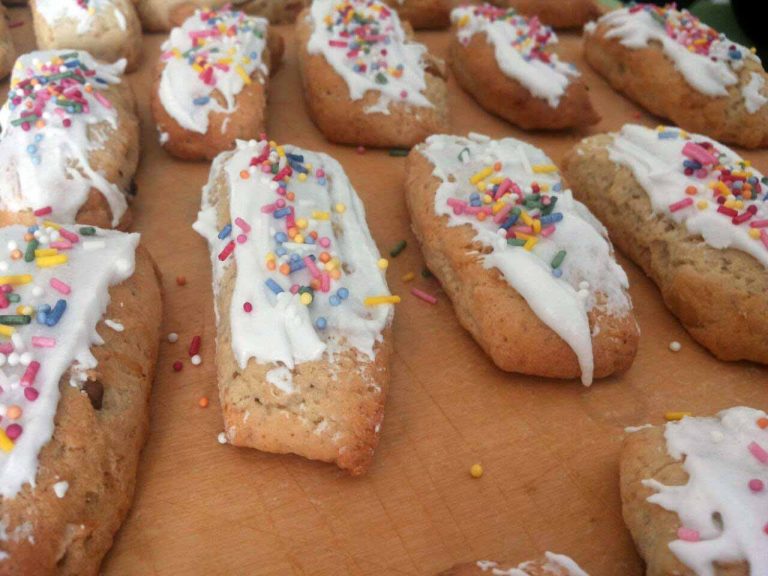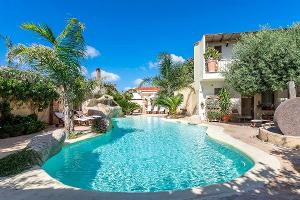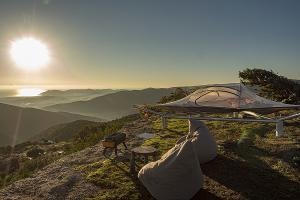Do you know that the winter season in Sardinia is everything but tasting delicious?
This is the story of our island in the seasons where she belongs to us more than usually. The plot follows the periodicity of the earth and the sea with an overview of flavours and recipe belonging to the most Sardinian time of the year. Sardinian gastronomy is firmaly anchored on the family tradition of the working class made by farmers, and shepherds and is strictly related to the religious events and anniversaries animating the island when the beaches empty out. This is the time in which the squares of Sardinian villages inland and in the coasts fill up and vibrate of feasts and culture. Such a gift for smart tourists travelling in the island in this period. They can live unique and incredible experiences and emotions watered with high quality wines.
Contact us to design a tailor made tour in the low season saving money you will literally taste a Sardinia which is hard to find during summer.
Special cookies for the sweetest Autumn: Papassinos
The Papassinos (also called Pabassinas in south Sardinia) are the most famous and delicious Sardinian cookies. It’s easy to find them in the bakeries all year long although their month is november, In fact, these pastries made with dry fruits and raisins (papassa is the Sardinian word for raisin) garnished with a pure white icing surrounded by colourful sugar tails were traditionally prepared for the All Saints Feast. The families preserving the tradition still bake papassinos in this period. Howevere, the preparation of these cookies takes a 12 months period with all the family involved in picking up the nuts, almonds and hazelnuts which will be opened and chopped up (according to one’s preference). In some areas of the island a special ingredient is added to the mixture. It’s the so-called Sapa, a sweet sugary gape sirup mabe by the fresh must. This rustic cookye recipe is intended to keep them perfect for month since they will be the main protagonists of many sweet breaks during the long winter weeks. If you are travelling in Sardiinia between the end of October and the firsts of November you will often feel the fragrance of passinos among the narrow streets of villages almost all across the island. With some luck you might be invited for a local to taste a fresh one together with an espresso cup.

Sea urchins spaghetti and the sea in winter
Fall season in Cagliari, Alghero and all the coastal villages with a deep tradition related to the world of fishing is sea urchins time. The fishing of this fine shellfish is strictly ruled by regional laws imposing a biological stop to allow their eggs to grow and reproduce. From the first of November until mid April the sea urchin season takes usually place. These are months of great work for Cagliari ricciai (sea urchins fishing) which prepare proper gazebo villages in front of Cagliari port of Su Siccu and along the Poetto of Quartu.
The perfect set for a very special lunch break also in weekdays. Imagine to leave the office and sit in front of the sea (oh, that’s something you can easily do in many Sardinian cities) open air (wintertime in the coast towns can be very mild) with a yummy hot seaurchins spaghetti portion. A true luck isn’t it? Usually you start with a “dozzina”, a portion of 12 sea urchins served with some bread before the main course. Sea urchin environment is truly fragile and for this reason many restaurants have decided to give up this delicacy, however we hope the sea urchin can go back in the chef’s kitchen as soon as possible.
January Bonfires and the green beans with lardo
Green beans with lard, (‘ava e lardu) are the perfect winter main course although might be a bit over caloric. Sardinian inland villages can be very cold in winter and also the snow quite often comes out to spin up the magic. This dish is usually served at the local community dinners held on Carnival for Shrove Thursday celebrations however it also marks the lightening of Bonfires for the Feast of saint Anthony in Nuoro. This is a very popular feast in Sardinia and particularly in Barbagia. In fact, this the night where the typical masks of the Carnevale Barbaricino show up for the first time. Mamuthones in the village of Mamoiada, Boes and Merdules in Ottana, Orotelli’s Thurpos, Su bundu in Orani. masks in Sarule etc. On the first night of the masks some villages also prepare other typical dishes based on pork meat and vegetables such as sa Ossica. Another specialty which can be experienced only if you visit Sardinia for Saint Anthony is the sweet bread baked with or without Sapa (grape syrup) and given to everyone attending the show of Bonfires,
Zippulas and the many sweetness of Sardinian Carnival
“If the pork gave the substance, the streets gave the sweets“. That’s what the great international artist and designer born in the Barbagia village of Orani, Costantino Nivola wrote about Carnival in Barbagia. well Carnival is seriously amazing and important in Sardinia. Nothing to do with that one held in Rio, sheeps leathers and cowbells to protect the models from the great cold instead of skimpy bikinis. And yet the atmosphere is one of the coolest you can imagine and the air crisp and sweet as the many delicacies strictly fried served in the squares and in the streets when awaiting for the masks parades.
The most recognized Carnival pastry are the famous zeppole which can be found everywhere in Sardinia. Zeppole are yummy fritters of a long shape scented with orange and lemon zeist, saffron certain times and covered with sugar. Even the most well known bakeries in the main towns bake hot zeppoles every day. According to the areas and the shape given they can be called also frittura araba (arabic frying) and frisgjoli. Not the mention the most scented doughnut with the hole ever: fatti fritti (aka parafrittus). The last ones are the more exquisite and classy: the orillettas (name used in Nuorese area and Logudoro) and acciuleddi (in Gallura). The first ones are flower shaped thin and crumbly stripes of fried dough plunged into sweet honey while acciuleddi whose shape remind that of a plate also covered with honey.
The bread as a winter main course
The carasau bread (or carasatu) symbol of Sardinian gastronomy is a very adaptable ingredient as most of the breads, which was the basic of the ancient farming and agricultural culture especially in Nuorese area. Among the tastiest preparations having the crispy carasau among the main ingredients there are the pane frattau (also called pane salitu in some areas of Baronia). It is so delicious which can is often made during summer at home and in most appreciated restaurants included the tourist ones although its soul belongs to winter.
Why? Well, just because the original recipe wants the carasau flat bread to be plunged in an abundant and savory hot sheep broth before being plate up and covered with generous tomato sauce n a lot of grated Pecorino cheese prepared such as lasagna. La The icing on the cake is the poached egg added at the end which gives this simple dish a creamy and rewarding taste which makes it so homey and good always. The pane frattau Gallura version is the famous suppa cuada, a rustic plate made with stale, cow milk and sheep broth. There are many local versions which are worth a try such as the zuppa berchiddese (to taste during the famous Time in Jazz festival).
Some curiosity on Sardinia winter cuisine
The pork is the main protagonist of the Sardinian cuisine during the winter months. With its meats Sardinian people prepare breads, sauces, sausages, hams and a lot of delicious stuff. As it happens for other farming the foods have a seasonal rhythm influenced by the nature and location of the areas. You will find sea urchins in the coast and the creamy fresh ricotta inland together with the first pecorini perfect for melt in the fireplace. As usually on the table appears also legumes (beans, chickpeas and green peas) and sweets.
Sardinian wines for traditional recipes
If the Cannonau is the perfect wine for the typical courses of the Barbagia Carnival and have fun even at a low temperatures. Sea urchins on the table? Opt in for a white wine choosing among a good Vermentino and a Torbato di Alghero. With desserts? Sipping a sweet Malvasia di Bosa they taste even more delicious.
 it
it de
de nl
nl en
en fr
fr



